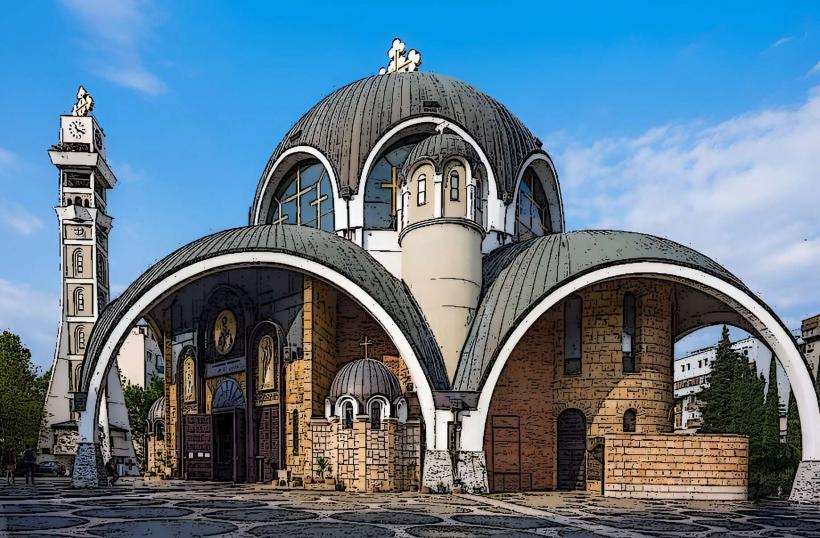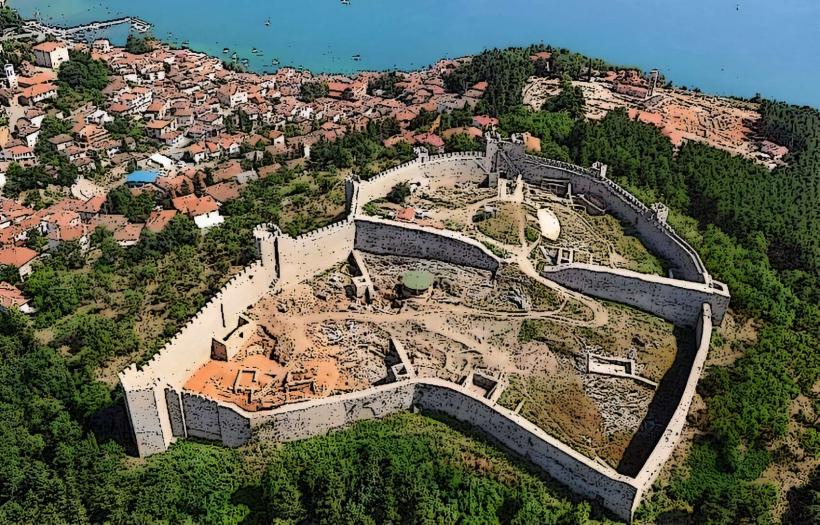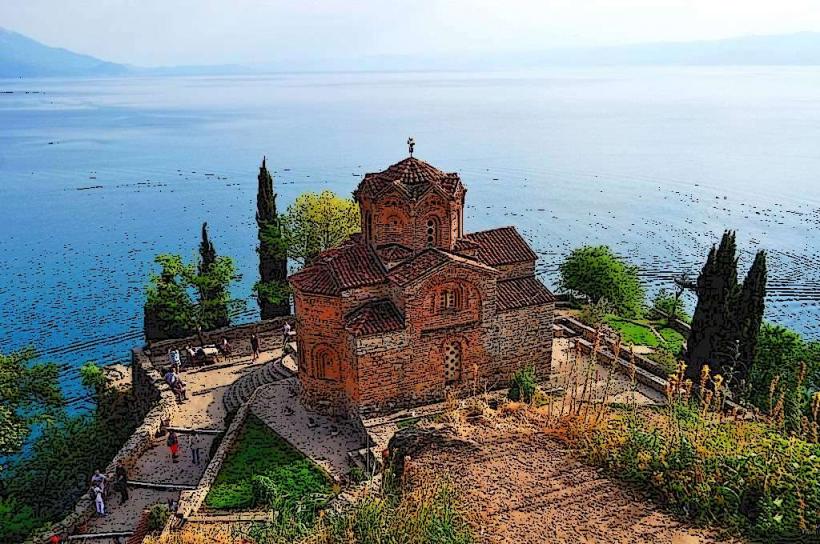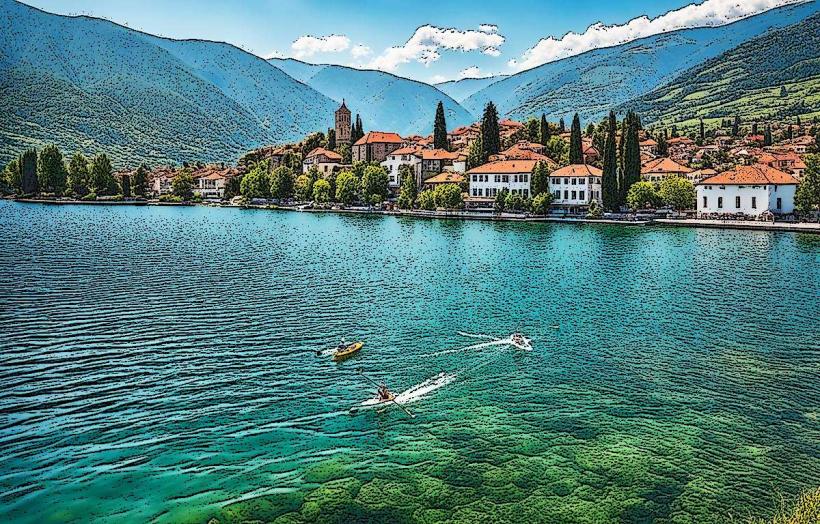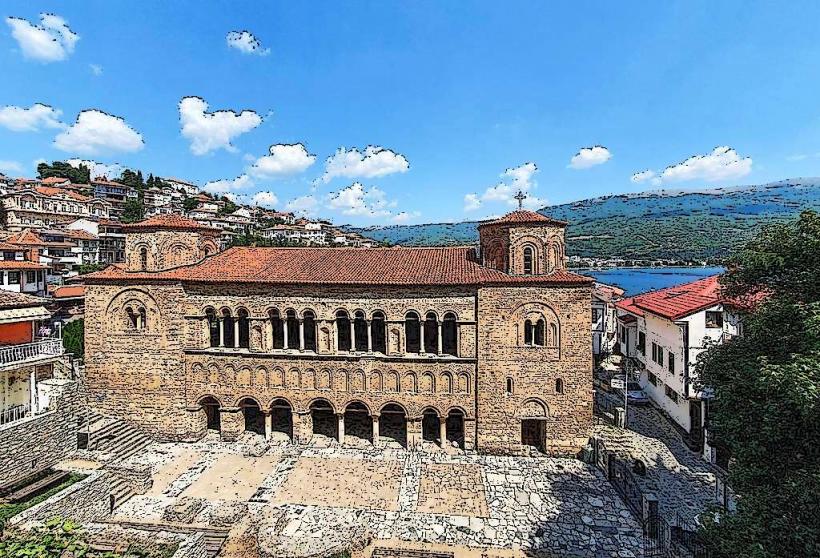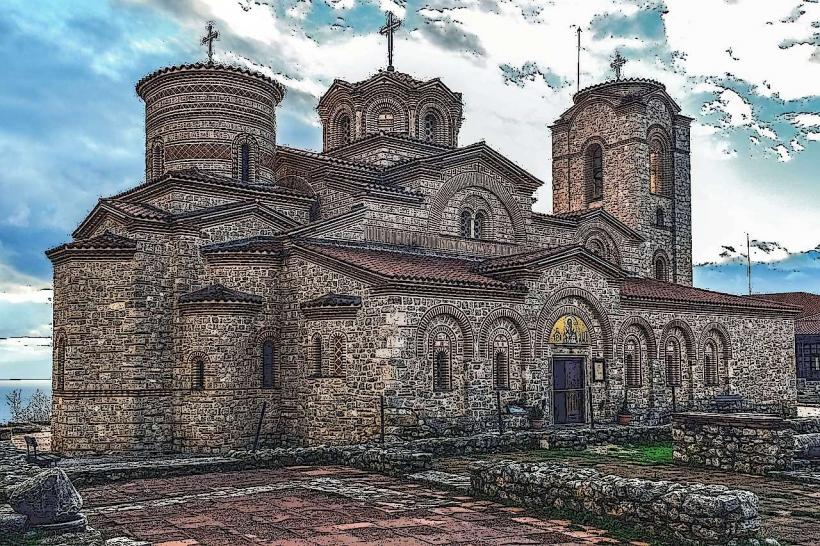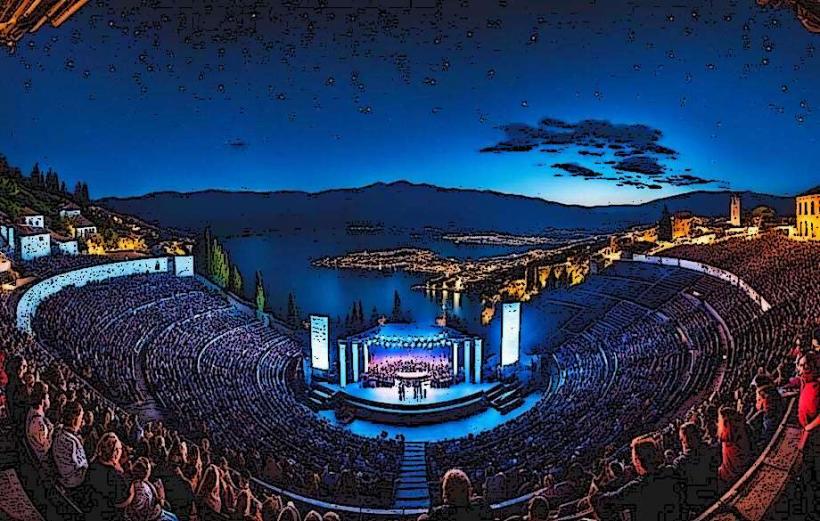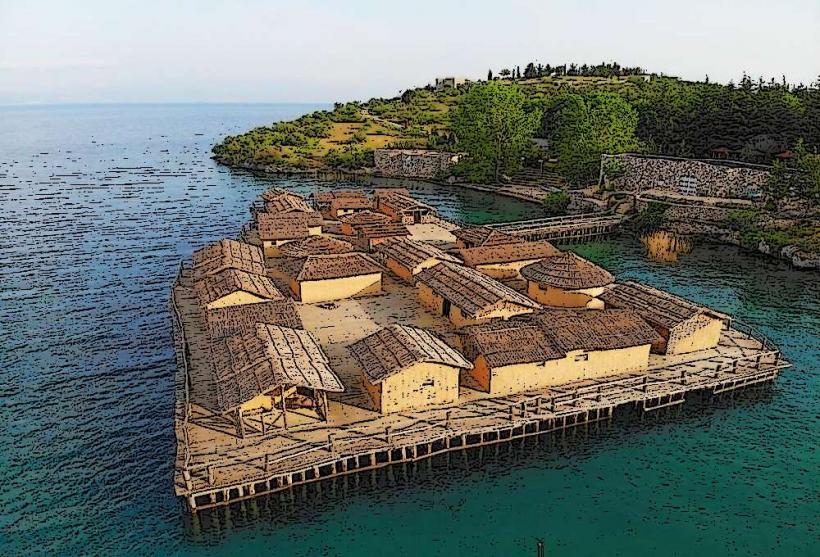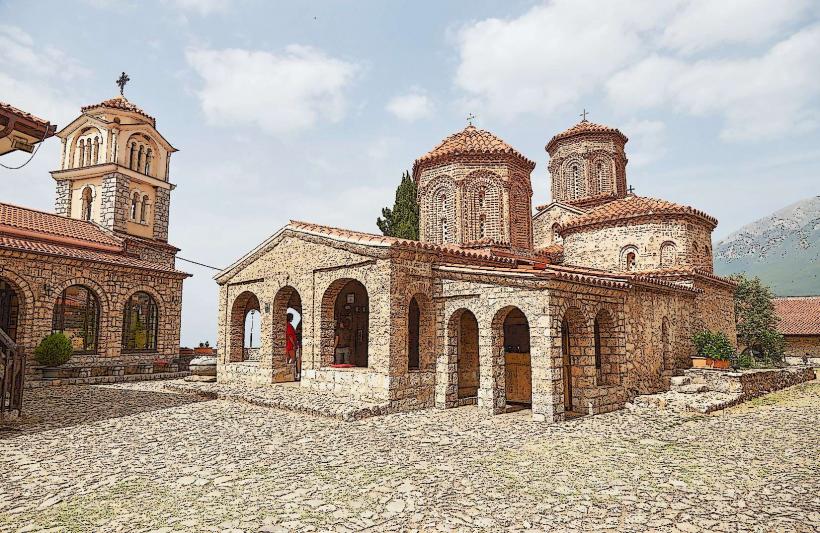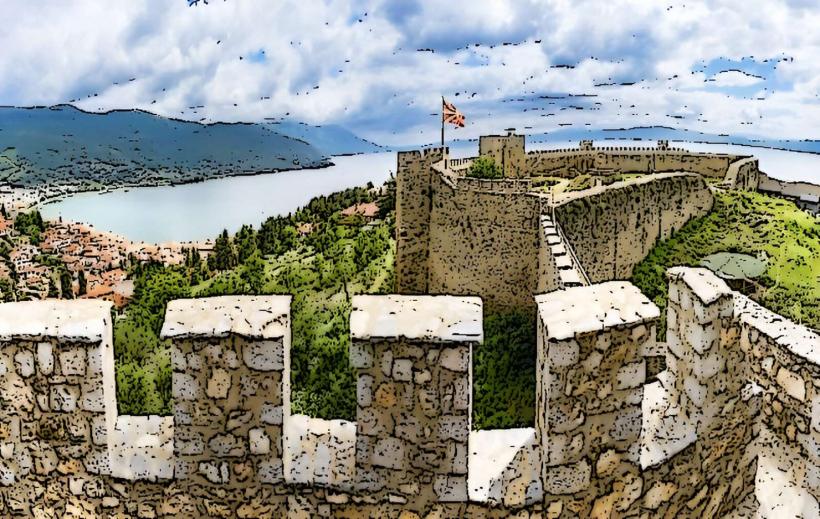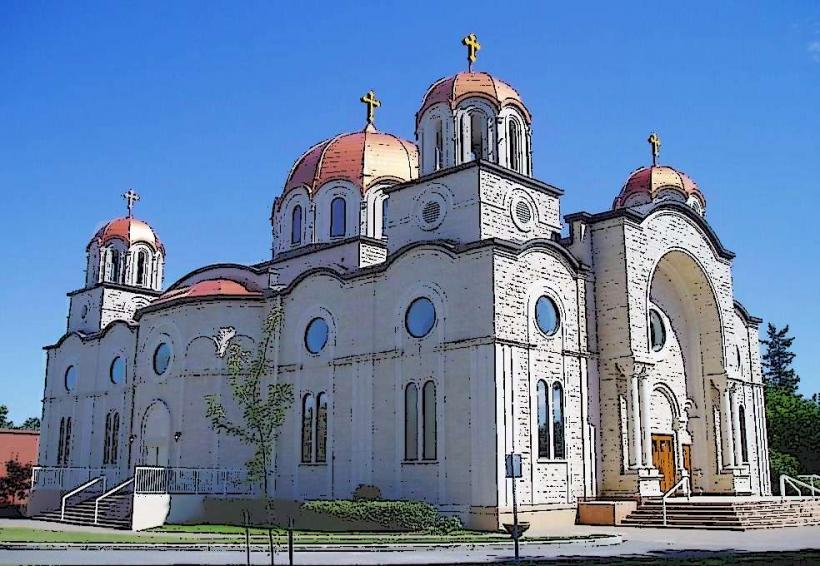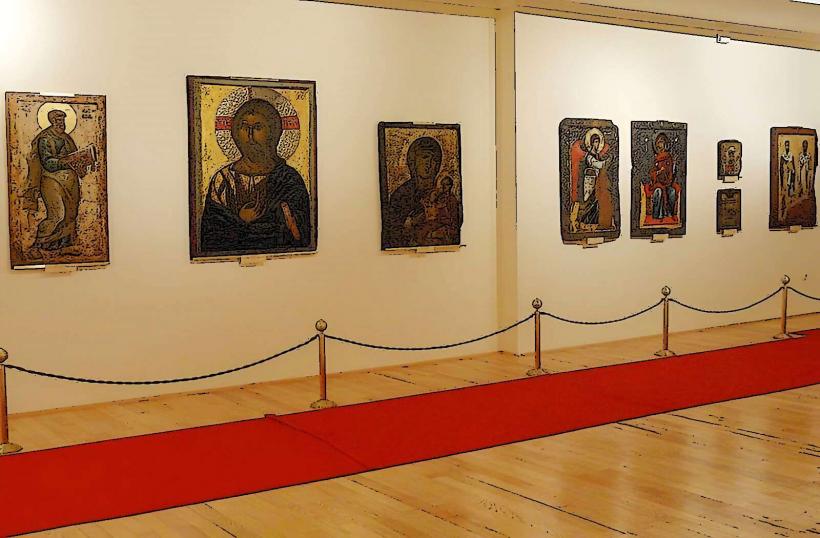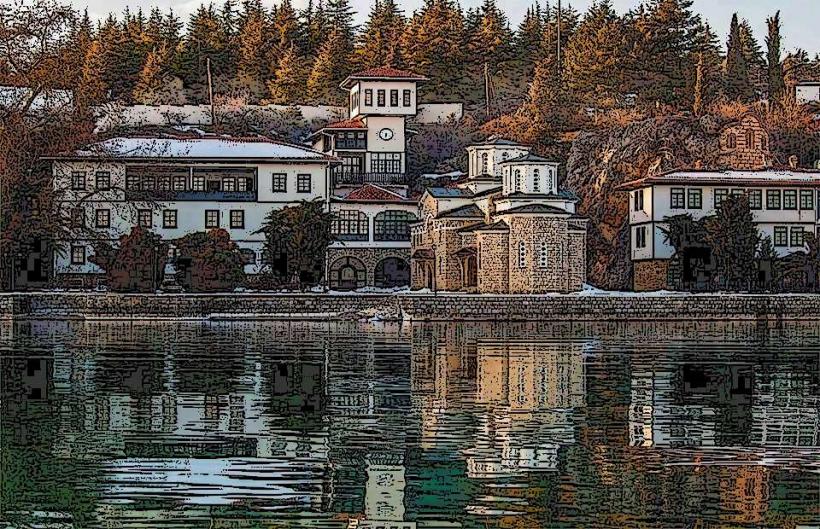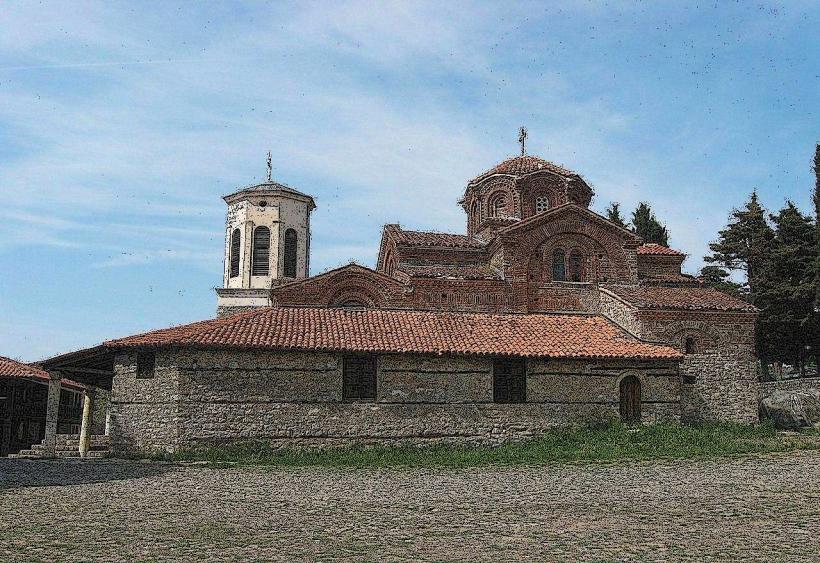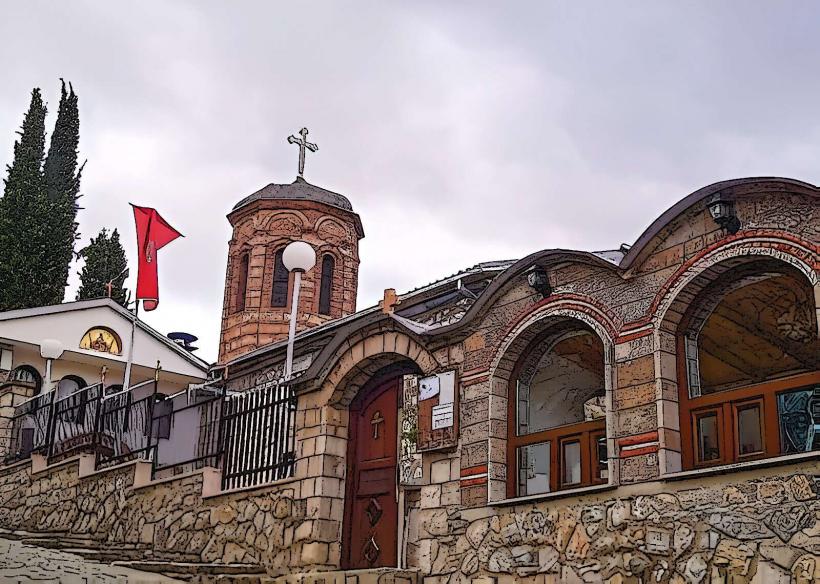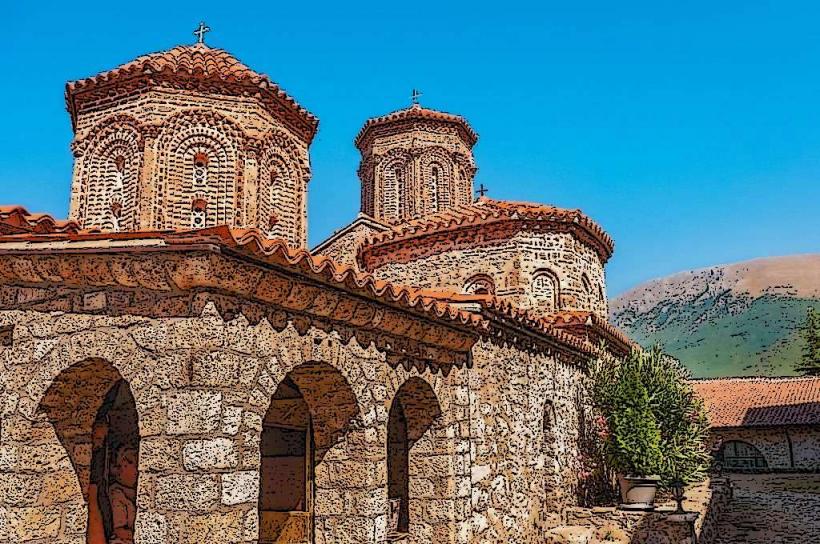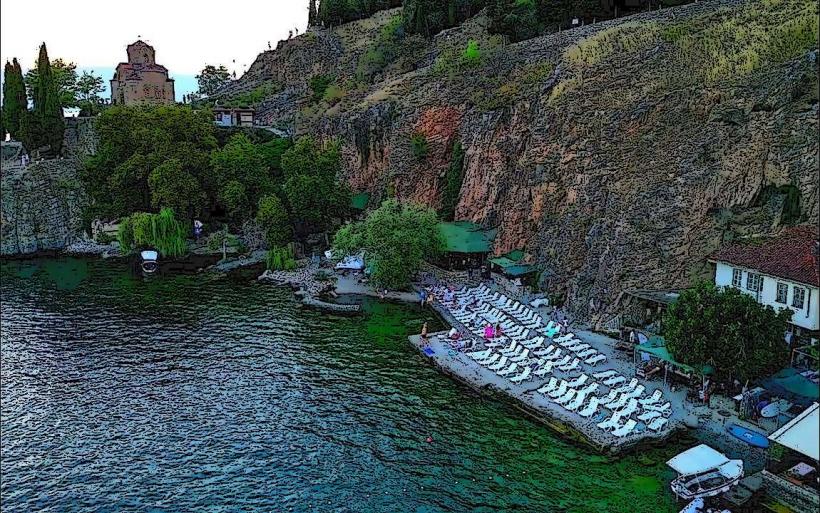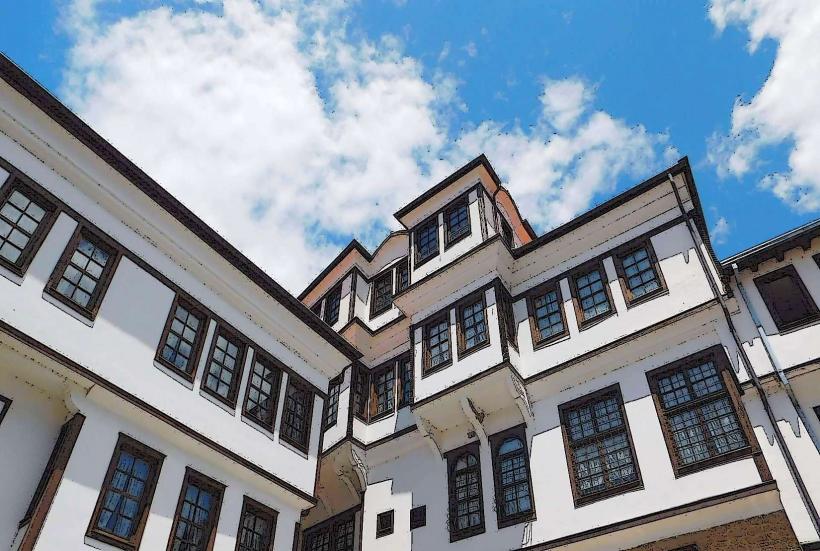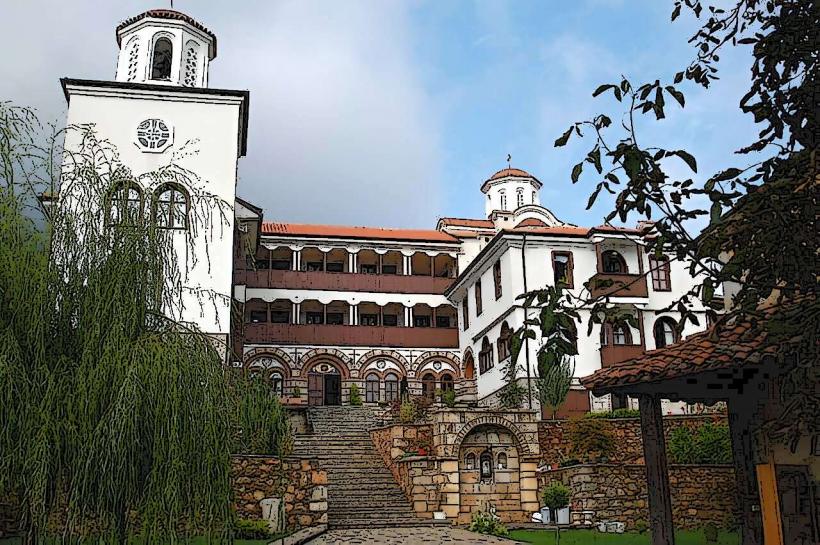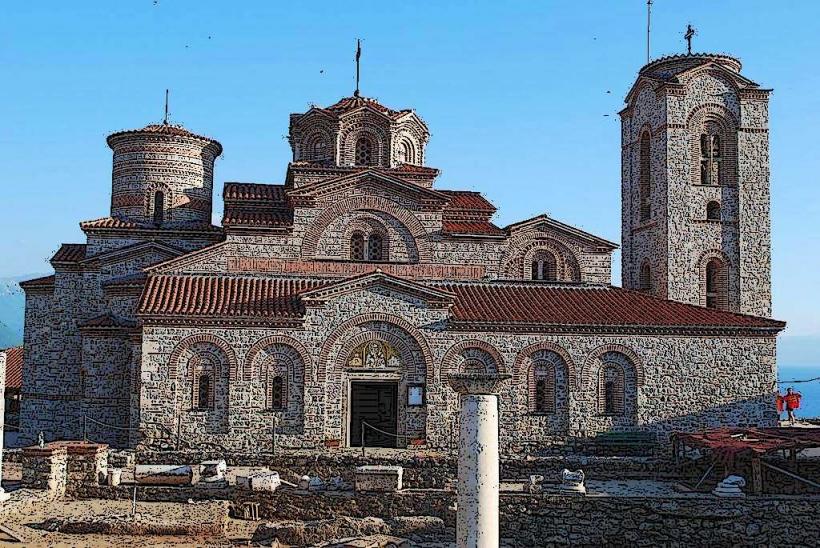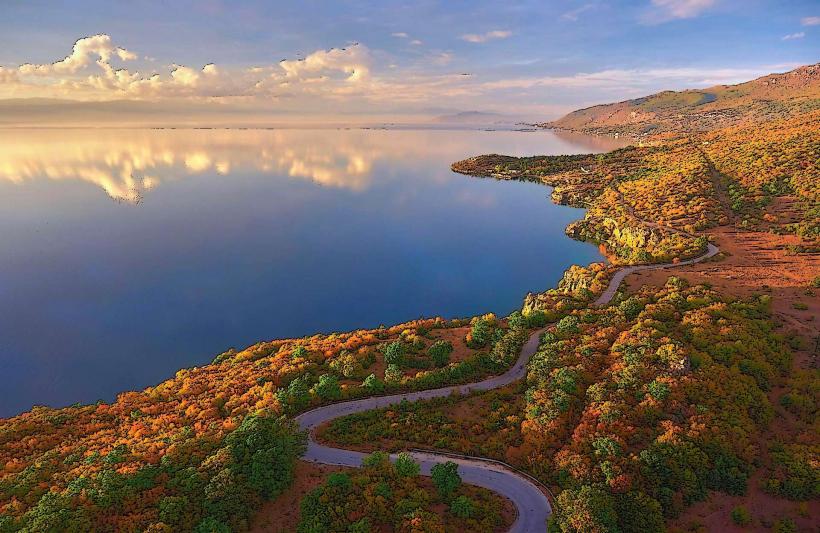Information
Landmark: Bigorski MonasteryCity: Ohrid
Country: North Macedonia
Continent: Europe
The Bigorski Monastery, officially known as the Monastery of St. John the Baptist (Sveti Jovan Bigorski), is one of the most significant religious and cultural landmarks in North Macedonia. Located in the Mavrovo National Park near the villages of Galičnik and Leunovo, the monastery is renowned for its spiritual heritage, architectural beauty, and historical significance.
Location:
- The Bigorski Monastery is perched on the slopes of Mount Bistra, overlooking the Radika River in western North Macedonia.
- Its scenic location, surrounded by dense forests and mountainous terrain, enhances its serene and spiritual ambiance.
Historical Background:
Founding:
- The monastery was founded in 1020 by Ivan Debranin during the Byzantine Empire. It is one of the oldest monastic institutions in the region.
- According to tradition, the name "Bigorski" comes from the bigor, or limestone rock, on which the monastery was built.
Ottoman Period:
- The monastery faced significant challenges during the Ottoman era, including destruction by Ottoman forces in 16th century. However, it was restored in 1743 by Hieromonk Ilarion, marking the beginning of its modern history.
- During this time, the monastery became a center of education and resistance against cultural and religious suppression.
Modern History:
- The monastery has undergone numerous restorations and expansions. It suffered a devastating fire in 2009, which destroyed parts of the guesthouse and other sections, but these were rebuilt in traditional style, preserving its original character.
Architectural Features:
Main Church:
- The central church, dedicated to St. John the Baptist, features traditional Byzantine-style architecture with stone walls, wooden beams, and intricate detailing.
- The church is adorned with stunning frescoes depicting biblical scenes and saints.
Iconostasis:
- The monastery’s iconostasis is one of its most prized treasures. Crafted between 1829 and 1835 by master woodcarvers from the Mijak region, it is a masterpiece of ecclesiastical wood carving.
- The iconostasis is richly decorated with intricate carvings of biblical scenes, floral motifs, and depictions of saints, showcasing exceptional craftsmanship.
Bell Tower and Guesthouses:
- The monastery includes a bell tower, a library, and beautifully restored guesthouses, blending traditional Macedonian architectural styles with modern functionality.
Other Structures:
- The monastery complex also features a water mill, chapels, and gardens, which enhance its self-sufficient and peaceful atmosphere.
Religious and Cultural Importance:
Spiritual Significance:
- Dedicated to St. John the Baptist, the Bigorski Monastery is a place of pilgrimage and worship for Orthodox Christians.
- It is especially known for its miracle-working icon of St. John the Baptist, believed to possess healing powers. The icon dates back to the monastery’s founding in the 11th century.
Cultural Role:
- Throughout history, the monastery has been a center for education, manuscript preservation, and Orthodox Christian culture in the Balkans.
- It played a key role in fostering Macedonian identity during periods of foreign rule.
Feast Day Celebrations:
- The monastery’s feast day on January 20th (or July 7th in the Julian calendar) attracts pilgrims from across North Macedonia and beyond.
Tourism and Accessibility:
Visitor Experience:
- The monastery is a popular destination for both spiritual pilgrims and tourists interested in its history, art, and architecture.
- Visitors can explore the church, admire the iconostasis, and enjoy the peaceful surroundings of the monastery.
Nearby Attractions:
- The monastery’s location in the Mavrovo National Park offers opportunities for hiking, nature walks, and exploring nearby attractions such as the villages of Galičnik and Vevčani Springs.
Guided Tours:
- Guided tours provide insights into the monastery’s history, religious practices, and cultural significance. The monastery also offers hospitality to pilgrims and visitors seeking a spiritual retreat.
Preservation Efforts:
- The Bigorski Monastery is under the care of the Macedonian Orthodox Church, which oversees its preservation and restoration.
- Recent restoration projects have focused on maintaining the authenticity of its artwork, architecture, and manuscripts.
Conclusion:
The Bigorski Monastery is not just a place of worship but a living monument to the rich spiritual, cultural, and historical heritage of North Macedonia. Its breathtaking location, iconic wood-carved iconostasis, and historical significance make it a must-visit destination for anyone exploring the region.

